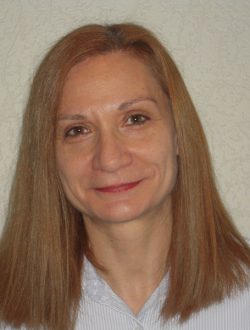Biography
Natalia K. Nikolova (IEEE S’93–M’97–SM’05–F’11) received the Dipl. Eng. (Radioelectronics) degree from the Technical University of Varna, Bulgaria, in 1989, and the Ph.D. degree from the University of Electro-Communications, Tokyo, Japan, in 1997. From 1998 to 1999, she held a Postdoctoral Fellowship of the Natural Sciences and Engineering Research Council of Canada (NSERC) at two Canadian universities, Dalhousie University in Halifax and McMaster University in Hamilton. In 1999, she joined the Department of Electrical and Computer Engineering at McMaster University, where she is currently a Professor. Her research interests include inverse scattering, microwave imaging, as well as computer-aided analysis and design of high-frequency structures and antennas. Prof. Nikolova has authored more than 270 refereed manuscripts and 5 book chapters as well as the monograph “Introduction to Microwave Imaging” (Cambridge University Press 2017). She is also the co-author of a book on microwave and millimeter-wave holographic imaging (IEEE-Wiley, 2019). She has delivered 47 invited lectures around the world on the subjects of microwave imaging and computer-aided electromagnetic analysis and design.
Prof. Nikolova held a Canada Research Chair in High-frequency Electromagnetics from 2008 to 2018. She is a Fellow of the IEEE and a Fellow of the Canadian Academy of Engineering (CAE). She served as an IEEE Distinguished Microwave Lecturer from 2010 to 2013.
Presentations
Microwave Near-field Imaging Of Human Tissue: Hopes, Challenges, Outlook
More than 40 years ago Larsen and Jacobi experimented with microwaves in the imaging of canine kidney. Their pioneering work triggered high hopes for a new diagnostic modality in medicine but also identified serious challenges. Research effort in this area continues unabated, focused especially on early-stage breast-cancer detection. The need for alternative cancer diagnostic tools is urgent and perceived worldwide as a high priority for research and development. Yet the very few clinical trials of experimental microwave imaging systems have not satisfied the requirements of today’s medical diagnostics. This talk briefly reviews past and recent developments in near-field microwave methods for tissue imaging. In the context of these developments, the major challenges are discussed – challenges which have so far prevented microwave imaging from becoming a clinically viable modality. Promising new directions of research are described that have the potential to bring about a breakthrough. These include advances in hardware design and characterization (sensor arrays, custom and laboratory measurement instrumentation), methodologies for tissue-parameter characterization, and the development of data-processing and reconstruction algorithms. Many of these new developments draw upon recent successes of microwave and millimetre-wave imaging systems used for concealed-weapon detection, through-the-wall imaging and underground surveillance. Thus it is shown how the ever expanding field of microwave imaging is converging to address some of society’s most urgent needs.
